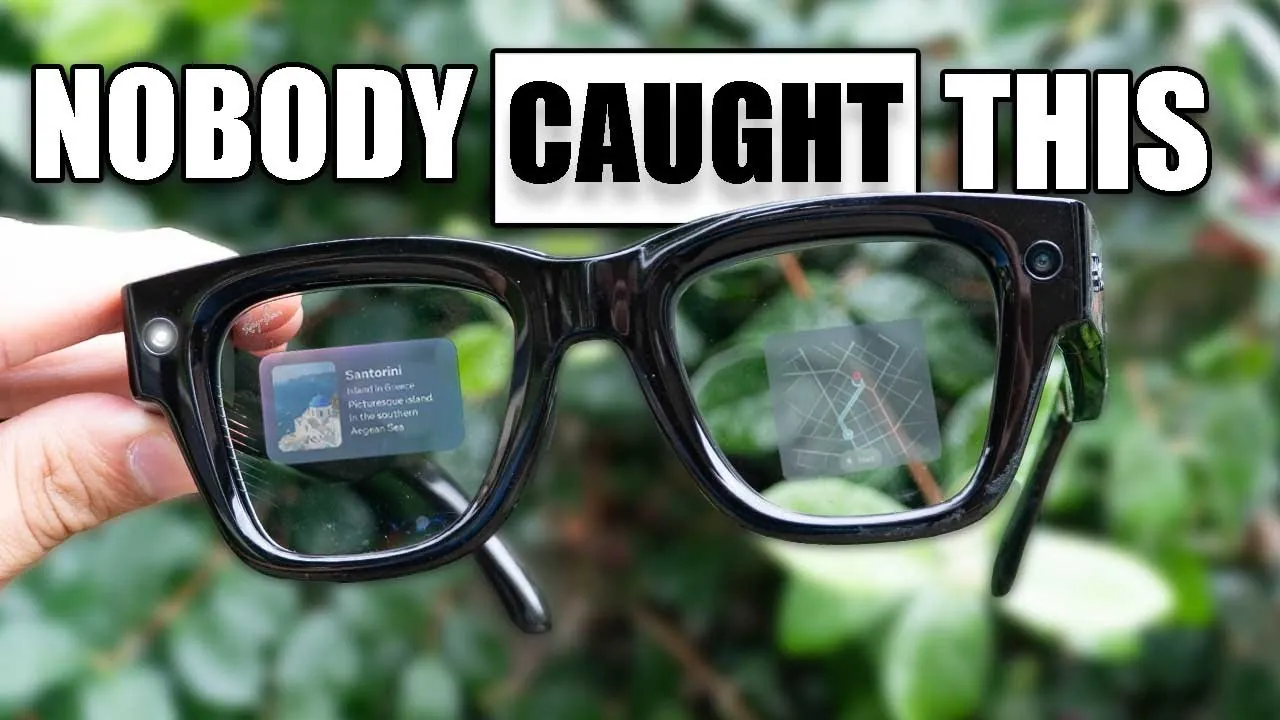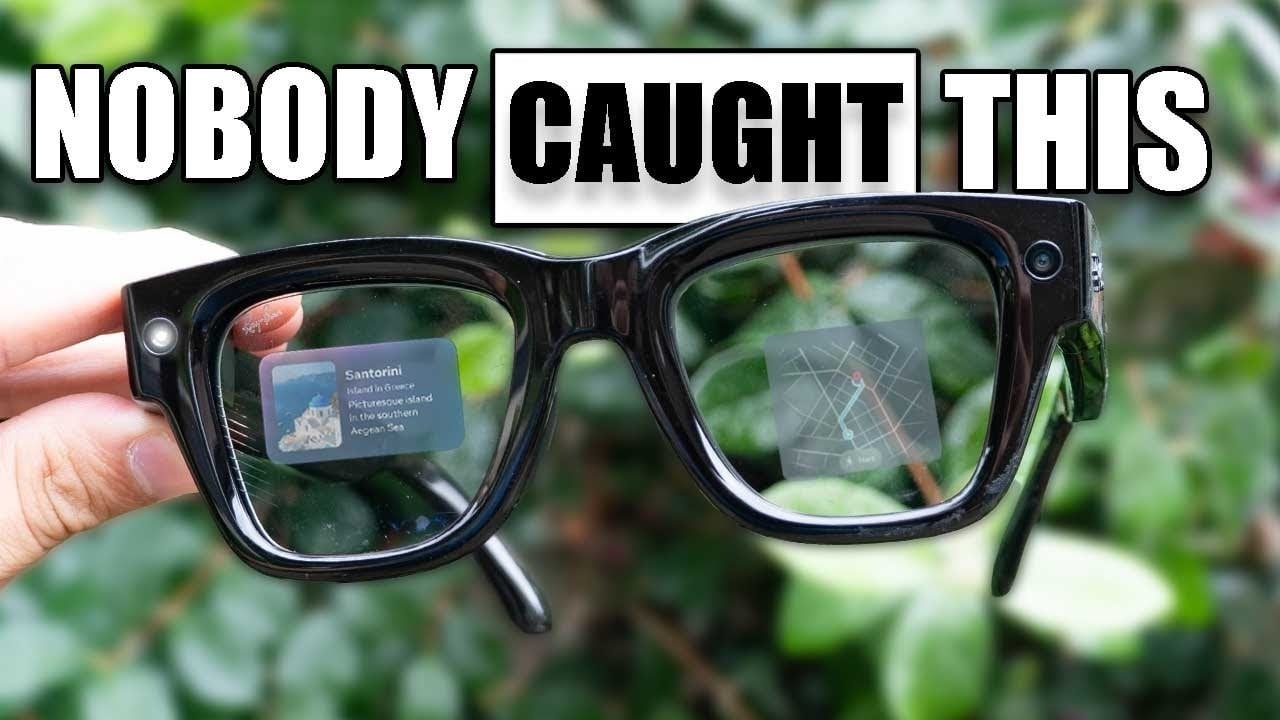
The Meta Ray-Ban smart glasses, paired with the Neural Band, mark a significant step forward in the evolution of wearable technology. By combining gesture-based navigation and live translation features, these devices aim to redefine how users interact with their surroundings. However, despite their innovative potential, they fall short of delivering a fully seamless experience. The video below from HotshotTek explores their design, functionality, and limitations, offering a comprehensive analysis for those interested in this emerging technology.
Design and Build: Classic Meets Modern
The Meta Ray-Ban smart glasses retain the iconic Wayfarer design, blending timeless aesthetics with modern functionality. Available in two frame sizes and three Neural Band sizes, the glasses are designed to accommodate a wide range of users. Their lightweight and compact build ensures comfort during extended wear, making them suitable for daily use. However, the single-lens display, positioned on the right side, has drawn comparisons to 3D movie glasses, which may not appeal to all users.
In terms of durability, the glasses feature an IPX4 water resistance rating, making them resistant to light rain and sweat. The Neural Band, on the other hand, features an IPX7 rating, allowing for greater water exposure, such as accidental splashes. However, neither device is designed for full submersion, limiting their use in more demanding environments. While the sleek design is functional, the single-lens display may cause discomfort during prolonged use, raising questions about its practicality for everyday wear.
Features and Functionality: Innovation with Limits
The Neural Band is the standout feature of this product, allowing gesture-based navigation that allows users to swipe, select, and adjust audio with simple hand movements. This hands-free interaction feels intuitive and futuristic, offering a glimpse into the potential of wearable technology. The glasses support basic tasks, such as viewing messages, photos, and videos, but app integration remains limited. While they work seamlessly with Facebook Messenger and WhatsApp, they lack compatibility with widely used platforms like iMessage and Instagram browsing.
Voice commands are another key feature, allowing tasks such as sending messages or posting updates on social media. The live captions and translation features add significant value, particularly for users in multilingual environments. However, the translation capability is restricted to five languages, which limits its global appeal. While these features demonstrate the potential of the device, their narrow scope reduces their overall impact and utility.
Camera and Media: A Mixed Performance
The glasses include a front-facing camera for capturing photos and videos, but its performance is underwhelming. It records up to 60 seconds of video, which is a notable downgrade from the promised 3-minute recording in 3K resolution expected in future models. The inclusion of gesture-based zoom functionality is a welcome addition, and an LED indicator ensures privacy by signaling when the camera is active.
Despite these features, the camera’s lower resolution and limited recording time may disappoint users seeking advanced media capabilities. These shortcomings highlight the need for significant hardware and software improvements in future iterations to meet the expectations of tech-savvy consumers.
Setup and Compatibility: Straightforward but Limited
Setting up the Meta Ray-Ban smart glasses is a relatively straightforward process, requiring users to pair the device with the Meta app. The Neural Band can also work alongside smartwatches, though some adjustments may be necessary to avoid interference. Notably, the glasses can function independently of the Neural Band, offering flexibility for users who prefer a simpler setup.
However, the device’s lack of dual-screen functionality and limited compatibility with popular apps restrict its versatility. These constraints suggest that cost-saving measures may have influenced the design, leaving room for improvement in future versions. For users seeking a more integrated experience, these limitations may prove to be a significant drawback.
Audio and Brightness: Bright Spots Amid Shortcomings
The glasses deliver clear audio playback, making them suitable for listening to music, podcasts, or voice messages. Brightness control is another strong point, with the glasses capable of achieving high levels of brightness for visibility in various lighting conditions. These features enhance the overall user experience, particularly in outdoor settings or noisy environments.
However, while the audio and brightness capabilities are commendable, they are not enough to offset the device’s other limitations. Users may find themselves wishing for a more comprehensive suite of features to justify the investment in this technology.
Limitations and Missed Opportunities
The Meta Ray-Ban smart glasses and Neural Band face several challenges that hinder their appeal. Missing features, such as video calling and gesture-based text input, limit their functionality. The single-lens display may cause discomfort for some users, and the absence of dual-screen capability reduces their versatility. Additionally, app integration remains a weak point, with popular platforms like Instagram and iMessage unsupported.
These limitations underscore the gap between the product’s potential and its current capabilities. While the technology is promising, its incomplete features and restricted functionality fail to meet the expectations of a rapidly evolving market. For now, the device remains a work in progress, with significant room for improvement.
Looking Ahead: A Promising but Imperfect Glimpse of the Future
The Meta Ray-Ban smart glasses and Neural Band represent an ambitious step forward in the realm of wearable technology. With intuitive navigation and innovative features, they offer a glimpse into what the future of smart eyewear could look like. However, their incomplete functionality, limited app integration, and basic camera performance leave much to be desired.
Future iterations of the product could address these shortcomings by introducing dual screens, expanded app compatibility, and enhanced media capabilities. Such improvements would position the Meta Ray-Ban smart glasses as a leading contender in the wearable tech market. Until then, they remain an intriguing yet imperfect product, offering a fascinating preview of the possibilities that lie ahead in this dynamic field.
Here are more detailed guides and articles that you may find helpful on Meta Ray-Ban smart glasses.
Source & Image Credit: HotshotTek
Filed Under: Gadgets News, Technology News, Top News
Latest Geeky Gadgets Deals
Disclosure: Some of our articles include affiliate links. If you buy something through one of these links, Geeky Gadgets may earn an affiliate commission. Learn about our Disclosure Policy.

